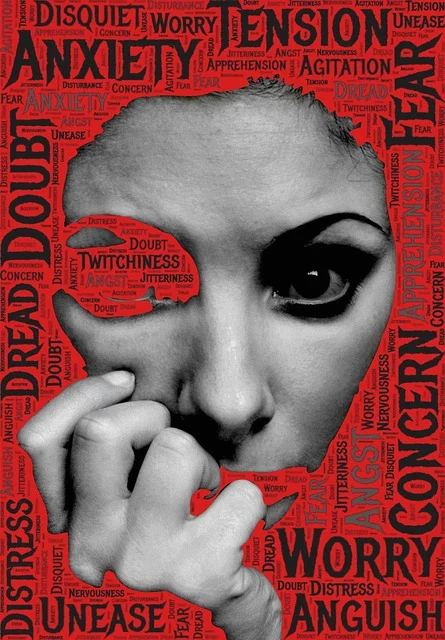Introduction
Anxiety disorders are among the most common mental health challenges worldwide, affecting millions of people across different ages and backgrounds. Yet, not all anxiety presents in the same way. While some individuals experience visible panic, avoidance, or emotional distress, others appear calm, organized, and highly accomplished — all while fighting constant internal tension. This hidden struggle is often referred to as high-functioning anxiety.

High-functioning anxiety is not a formal diagnosis in the Diagnostic and Statistical Manual of Mental Disorders (DSM-5), but it describes a recognizable pattern of behavior and emotional experience. Individuals with high-functioning anxiety often maintain successful careers, relationships, and social lives while internally battling excessive worry, perfectionism, and self-doubt. The condition reflects the paradox of external composure masking internal chaos — a reality many professionals, students, and caregivers face silently.
Raising awareness of high-functioning anxiety is crucial because it often goes undetected and untreated. Understanding its symptoms, causes, and management strategies can help reduce stigma and promote early intervention before the anxiety becomes overwhelming or leads to burnout.
What Are the Symptoms of High-Functioning Anxiety?
High-functioning anxiety manifests as a complex combination of emotional, cognitive, and behavioral symptoms. Unlike generalized anxiety disorder (GAD), where worry can visibly impair functioning, individuals with high-functioning anxiety channel their anxious energy into productivity and achievement.
1. Emotional and Cognitive Symptoms
People with high-functioning anxiety frequently experience:
- Excessive worry about performance, relationships, and future outcomes.
- Fear of failure despite evidence of success.
- Overthinking and difficulty letting go of small mistakes.
- Perfectionism, often driven by internal pressure rather than external demands.
- Guilt or shame for not feeling satisfied even after achieving goals.
This constant state of mental overdrive creates an inner tension between the need for control and the fear of imperfection.
2. Behavioral Symptoms
Behaviorally, high-functioning anxiety often looks like:
- Over-preparation or procrastination due to fear of not meeting standards.
- Difficulty delegating tasks or trusting others’ competence.
- Excessive people-pleasing to avoid disapproval.
- Compulsive checking or reassurance-seeking behaviors.
- Inability to relax — even during leisure or vacation time.
These patterns are often misinterpreted as admirable work ethic or dedication, masking the psychological distress behind them.
3. Physical Symptoms
Chronic anxiety activates the body’s stress response system, leading to physical signs such as:
- Muscle tension and headaches
- Rapid heartbeat and shallow breathing
- Digestive discomfort
- Fatigue or insomnia
- Sweating and trembling
While these symptoms are common in anxiety disorders, individuals with high-functioning anxiety often suppress or rationalize them as part of a “busy lifestyle.”
What Are the Symptoms of High Anxiety?
To understand high-functioning anxiety, it’s essential to compare it with high anxiety more broadly — an elevated and persistent state of arousal that affects physical and psychological well-being.
1. Psychological and Physiological Activation
High anxiety triggers the fight-or-flight response, releasing stress hormones like adrenaline and cortisol. Prolonged activation leads to:
- Constant alertness or hypervigilance
- Irritability and emotional exhaustion
- Sleep disruption
- Impaired focus and concentration
When the nervous system remains in a sustained state of alert, the individual may experience both mental fatigue and physical health decline.
2. The Difference Between High Anxiety and High-Functioning Anxiety
While both involve heightened stress, the key distinction lies in behavioral adaptation:
- Individuals with high anxiety may experience visible impairment or avoidance.
- Those with high-functioning anxiety continue performing at high levels but feel driven by internal fear rather than passion or fulfillment.
This distinction underscores why high-functioning anxiety can be difficult to identify — success becomes both the mask and the symptom.
How to Reduce High-Functioning Anxiety
Managing high-functioning anxiety involves balancing mental resilience with realistic self-care. Because those affected often struggle to “slow down,” treatment must focus on reframing beliefs about productivity, control, and self-worth.
1. Cognitive-Behavioral Strategies
Cognitive Behavioral Therapy (CBT) remains one of the most effective treatments for anxiety-related conditions. It helps individuals:
- Identify and challenge irrational thoughts.
- Reframe perfectionistic beliefs.
- Learn relaxation and grounding techniques.
- Practice gradual exposure to uncertainty or imperfection.
CBT also encourages patients to differentiate between helpful motivation and anxiety-driven compulsion.
2. Mindfulness and Relaxation Techniques
Mindfulness-based interventions, including meditation, breathing exercises, and body awareness, can calm the nervous system and interrupt automatic anxiety responses. Regular practice reduces physiological arousal and enhances emotional regulation.
Popular methods include:
- Diaphragmatic breathing
- Progressive muscle relaxation
- Guided imagery
- Mindful journaling
3. Lifestyle Adjustments
Lifestyle plays a crucial role in reducing anxiety. Professionals often neglect these aspects due to their busy routines:
- Sleep hygiene: Maintain consistent sleep patterns and minimize screen time before bed.
- Exercise: Regular physical activity releases endorphins that balance mood.
- Diet: Reduce caffeine and processed sugars that can trigger anxiety.
- Work-life boundaries: Schedule time for rest, hobbies, and personal connection.
4. Professional and Social Support
Therapists, counselors, and psychiatrists can help develop tailored coping plans. Peer support or group therapy may also provide validation and reduce isolation. For severe anxiety, medications such as SSRIs or SNRIs may be prescribed under professional guidance.
Is High-Functioning Anxiety a Form of ADHD?
The overlap between high-functioning anxiety and Attention-Deficit/Hyperactivity Disorder (ADHD) often leads to diagnostic confusion. Both conditions share symptoms such as restlessness, racing thoughts, and difficulty relaxing. However, their origins and manifestations differ significantly.
1. Shared Symptoms
- Difficulty concentrating
- Overwhelm in high-stimulus environments
- Impulsivity or indecisiveness
- Restless energy
- Sleep problems
2. Distinguishing Features
| Feature | High-Functioning Anxiety | ADHD |
|---|---|---|
| Primary Emotion | Fear, worry, perfectionism | Inattention, impulsivity |
| Motivation | Driven by fear of failure | Driven by novelty and stimulation |
| Behavior | Over-control, over-preparation | Under-control, distractibility |
| Emotional Regulation | Internalized tension | Fluctuating focus and emotion |
While anxiety often results from internalized fear of imperfection, ADHD stems from neurodevelopmental differences affecting attention regulation. Nonetheless, both can coexist — a condition known as comorbidity — complicating treatment and requiring integrated approaches.
3. Coexisting Conditions
When high-functioning anxiety and ADHD occur together, individuals may experience cycles of intense productivity followed by burnout. Treatment focuses on managing executive function through therapy, structured routines, and sometimes medication.
The Hidden Cost of Appearing “Fine”
Society often rewards productivity, control, and achievement — the very behaviors that mask anxiety. Individuals with high-functioning anxiety may be seen as dependable and ambitious, yet inside they experience persistent self-doubt and emotional fatigue.
1. Emotional Burnout
Constant hypervigilance and self-pressure eventually lead to exhaustion. Emotional burnout manifests as:
- Loss of motivation
- Emotional detachment
- Decreased satisfaction in work and relationships
Without intervention, this state can progress into depression or physical health decline.
2. Perfectionism and Impostor Syndrome
Many individuals with high-functioning anxiety also experience impostor syndrome — the belief that their success is undeserved or temporary. Despite achievements, they remain convinced that failure is imminent.
3. Social and Relationship Strain
The need for control and reassurance can cause conflict or emotional distance in relationships. Fear of vulnerability often prevents open communication, reinforcing isolation and misunderstanding.
Healing and Building Resilience
Recovery from high-functioning anxiety is not about eliminating anxiety but learning to manage it effectively and compassionately.
1. Psychotherapy and Emotional Awareness
Therapeutic modalities such as CBT, ACT (Acceptance and Commitment Therapy), and psychodynamic therapy help individuals understand the roots of their anxiety and reshape maladaptive coping mechanisms.
2. Self-Compassion and Emotional Regulation
Practicing self-compassion reduces the inner critic that fuels anxiety. Instead of striving for flawlessness, individuals learn to accept mistakes as part of growth. Emotional regulation techniques — such as grounding, journaling, or expressive writing — promote awareness and healing.
3. Mind-Body Integration
Approaches like yoga, somatic therapy, and breathwork help release stored tension from the body. This integration supports long-term resilience by calming both the mind and nervous system.
4. Building Healthy Boundaries
Learning to say “no,” delegating responsibilities, and prioritizing rest are crucial. Healthy boundaries protect mental energy and prevent relapse into chronic stress cycles.
Conclusion
High-functioning anxiety represents a complex paradox — high achievement coexisting with deep internal unease. Though not a formal diagnosis, it reflects a significant mental health concern in today’s productivity-driven culture. Individuals with high-functioning anxiety often excel professionally yet suffer silently, driven by perfectionism, self-criticism, and the fear of failure.
Recognizing the signs is the first step toward recovery. Through evidence-based therapy, self-compassion, mindfulness, and balanced living, individuals can transform anxiety from a source of distress into a motivator for self-awareness and resilience.
Ultimately, healing from high-functioning anxiety means redefining success — not as constant performance, but as inner peace, authenticity, and emotional well-being.



